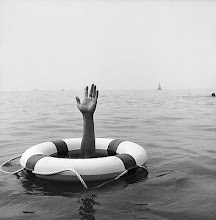
Early in 1967, Bob Hansen (then American Honda’s Midwest Regional Manager) was invited to a meeting in Japan at Honda. Prior to the scheduled meeting, Hansen went on a guided tour through the Honda R & D Company, where he learned that Honda was secretly working on some test blocks for “a big engine, for a big motorcycle.” It was his impression that they were working on a big twin. Following the tour, Hansen attended the meeting that was led by Mr. Soichiro Honda and attended by Honda’s chief engineers. During that meeting, Mr. Honda stated his intention to build the “King of motorcycles.” Mr. Hansen then brashly stated, that he “hoped it was not a twin!” He went on to say that, “it must be a four cylinder.”
Over one year later, in September of 1968, Hansen received a letter from Yoshiro Harada, Director of Honda R. & D., that contained photographs of an early CB750 (four cylinder!) prototype. The vision soon became a reality in early 1969, when Honda began to produce this remarkable motorcycle. Quickly capturing the interest of the American market, the stock CB750 featured a transverse in line 4 cylinder 736 cc engine, that produced 67 horsepower, and a top speed of 125 miles per hour.
To demonstrate the capabilities of this new machine to the world marketplace, Honda put together a factory effort to race the bike at Daytona in 1970. Honda’s race division quickly went to work on the already capable stock CB750, to produce a race version of the bike for the Daytona 200. It was initially referenced as the “CB750 Racing Type”. It later became known as the CR750. The factory produced four bikes for that early race effort. Mr. Hansen (now elevated to the position of American Honda’s National Service Manager) was chosen to help run the 1970 Daytona race campaign.
On March 15, 1970, Dick Mann rode one of those factory CB750 Racing Types (against a field of Harley-Davidsons, BSAs, Triumphs, Suzukis, and Yamahas), to win the Daytona 200, and set a new track record
As a direct result of, and to support the 1970 race effort, Honda produced a limited number of CB750 race kits, and made them available to their dealer network. The race parts kit contained over 150 special parts, including everything from special racing pistons, rings, valves, crankshaft, camshaft, pipes, forks, brakes, gears, rims, spokes, and sprockets, down to special gauges, carburetors, and a generator.
The race parts in the kits were designated in Honda’s parts locator system, by the numbers “970”. The net result of installing the race kit was to raise the engines output 23 horsepower to 90 horsepower, and the redline to an angry 10,500!
Unfortunately, due to the limited number of kits manufactured, and a subsequent recall and destruction of many of these early parts by Honda of North America, assembling a kit CB750 Racing Type today is an extremely daunting task.
from vic world::

A little over 10 years ago, I decided to build a CB750 Race Type, from original NOS parts. As the original parts have long been unavailable from Honda, the decision to build the bike started me on a long odyssey of scouring the world for the elusive, rare “970” parts.
The bike that sits before you today, containing over 160 “970” parts, first roared into life in April of 1999, taking third place by Dave Rosno in AHRMA’s Formula 750 race at Sears Point. This was against the likes of the Poppster, Will Harding, and Reg Pridmore, all mounted on 750 Hondas as well. It is an early sandcast bike with frame number 000291, thus making it built within the first 5 days of production in April of 1969. The color of the bike is candy sapphire blue, a factory color from Honda in 1970, which was of course when the Daytona race was won.
The bike could have never been built, except there was first a dream, and then many people helped make that dream a reality. Sincere thanks go out to all those who had a hand in my project. I hope you enjoy it as much as I do! Many thanks again.
Vic World
World Motorcycles
s




No comments:
Post a Comment